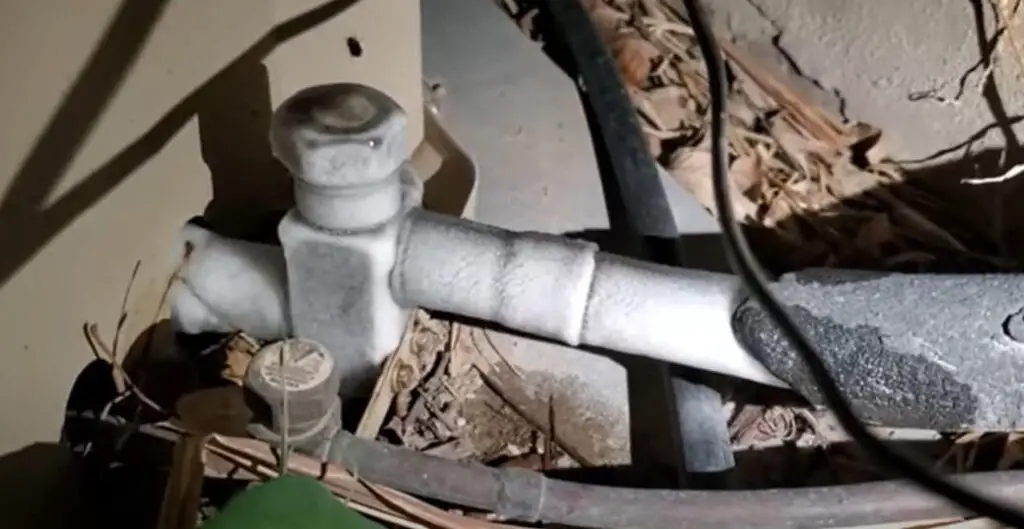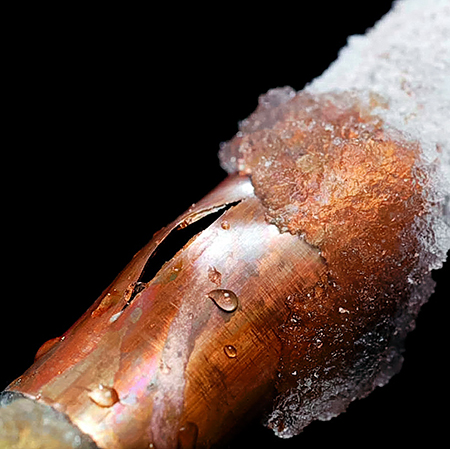The Air Conditioner Pipe Is Frozen - What Should I Do? Guidance for Homeowners
The Air Conditioner Pipe Is Frozen - What Should I Do? Guidance for Homeowners
Blog Article
They are making a few great points related to Have a Frozen AC Line? Here’s How to Fix It in general in this content in the next paragraphs.

Intro
Discovering that your a/c pipeline is frozen can be concerning, specifically during hot summertime when you rely upon your air conditioning unit the most. Comprehending what to do in such a scenario is crucial to avoid further damage to your air conditioning system and ensure your comfort inside.
Comprehending the Causes
Numerous elements can add to the cold of an air conditioning pipe. Understanding these reasons can aid you resolve the concern successfully.
Absence of Airflow
One typical cause of a frozen air conditioning pipe is inadequate air movement. When the air flow over the evaporator coil is restricted, it can cause the coil to go down below freezing temperature level, bring about ice formation on the pipe.
Reduced Refrigerant Levels
Not enough refrigerant degrees in your a/c system can also result in an icy pipeline. Reduced cooling agent levels can create the pressure in the system to drop, bring about the freezing of wetness on the evaporator coil.
Cold Weather Conditions
In colder environments, freezing temperatures outside can contribute to the cold of a/c pipes. If your AC system is not properly protected or if there are leakages in the ductwork, chilly air can infiltrate the system, creating the pipe to ice up.
Dirty Air Filters
Unclean or stopped up air filters can limit air movement in your a/c system, leading to various issues, including an icy pipeline. It's vital to change or cleanse your air filterings system frequently to ensure proper airflow and stop ice build-up.
Indications of a Frozen Air Conditioning Pipe
Recognizing the indications of an icy a/c pipeline is crucial for prompt activity.
Reduced Airflow
If you discover a significant decrease in airflow from your vents, it might suggest an icy pipeline.
Ice Buildup on the Pipe
Noticeable ice accumulation on the refrigerant line or the evaporator coil is a clear sign of a frozen AC pipe.
Unusual Sounds from the Unit
Unusual audios, such as hissing or gurgling, originating from your AC unit can signal that there's ice present on the pipeline.
Immediate Actions to Take
When faced with a frozen AC pipeline, it's important to act swiftly to prevent further damage to your cooling system.
Turning off the air conditioning
The primary step is to switch off your a/c to stop the system from running and aggravating the issue.
Checking for Blockages
Inspect the area around the indoor device for any kind of blockages that might be obstructing air movement, such as furnishings or drapes.
Defrosting the Pipe
You can utilize gentle techniques like positioning towels taken in warm water around the icy pipe to assist thaw it gradually.
Safety nets
Taking safety nets can help avoid future events of an icy air conditioner pipeline.
Normal Maintenance Checks
Set up normal upkeep get in touch with a specialist HVAC specialist to guarantee that your a/c system is running successfully.
Changing Air Filters
Routinely replace or cleanse your air filters to stop air flow limitations and maintain ideal performance.
Protecting Exposed Pipes
If your AC pipelines are subjected to chilly temperature levels, consider insulating them to avoid cold throughout winter season.
Seeking Professional Help
If DIY techniques fall short to solve the issue or if you're unclear about how to continue, it's finest to seek aid from a certified HVAC specialist.
When DIY Methods Fail
If your efforts to thaw the pipe or address various other problems are unsuccessful, it's time to call an expert.
Importance of Hiring a Professional HVAC Technician
A qualified HVAC service technician has the competence and tools necessary to identify and repair problems with your AC system securely and efficiently.
Verdict
Handling an icy air conditioning pipeline can be an irritating experience, however recognizing exactly how to react can help lessen damage and bring back convenience to your home. By comprehending the reasons, recognizing the indicators, and taking prompt activity, you can effectively attend to the concern and protect against future occurrences.
What to Do If Your AC Line Is Frozen
Make Sure All Supply and Return Air Vents Are Open
If you notice problems with airflow, the first thing you should do is check your supply and return vents. Supply vents distribute clean, conditioned air throughout your home. As this air becomes stale, it’s pulled into the return vent, where it’s reconditioned before being sent back out through the supply vent.
When these vents are closed, air won’t flow in the home. Before examining your AC, check the vents in every room and ensure they’re all open.
Check for a Dirty Air Filter
Another possible cause of limited airflow is a dirty air filter. Your air conditioner’s filters catch elements you don’t want to breathe in, such as dirt and dust. Over time, filters can become clogged, ultimately blocking air from flowing in and out. The lack of airflow can then cause the entire coil to freeze and will completely restrict any air from moving through it. The AC may need to be powered off for one to two days to allow the coil to thaw after replacing the filter to allow proper functioning of the unit. This debris can also accumulate on your AC’s evaporator coil, requiring a more serious repair. In general, air filters should be cleaned regularly (about every two weeks).
Assess Your Outdoor Unit
In addition to checking your AC, assessing the outdoor unit is a good idea. Also known as the condensing unit, it works with your interior unit to release heat outside. An issue with the outdoor unit can result in rising internal temperatures.
Overgrown Shrubs or Clogged Leaves
From leaves and twigs to shrubs and debris, there’s no shortage of outdoor elements that can accumulate around your condensing unit. When these elements get lodged inside the unit, they can block airflow. Fortunately, removing the blockage can solve the problem.
Sounds of a Broken Fan
Shrubs and leaves aren’t the only things that can impede your outdoor unit’s airflow. If the fan is broken, the unit won’t be able to properly get rid of heat — which means the internal temperature won’t go down. First, make sure the fan is spinning. If it is, check for the following sounds of a broken fan:
Buzzing Rattling Screeching Hissing Clicking Preventative Measures
Nobody wants to deal with a frozen AC line. In addition to causing problems with your air conditioner, they require professional repairs. On the bright side, there are preventative measures you can take to help ensure this issue doesn’t arise in the first place.
https://www.coopergreenteam.com/blog/what-to-do-if-ac-line-frozen

Do you appreciate reading about Have a Frozen AC Line? Here’s How to Fix It? Write feedback below. We'd be interested to see your opinion about this blog post. In hopes that you come back again in the future. Sharing is nice. Helping others is fun. Kudos for your time. Kindly come visit our site back soon.
Book Service Now Report this page